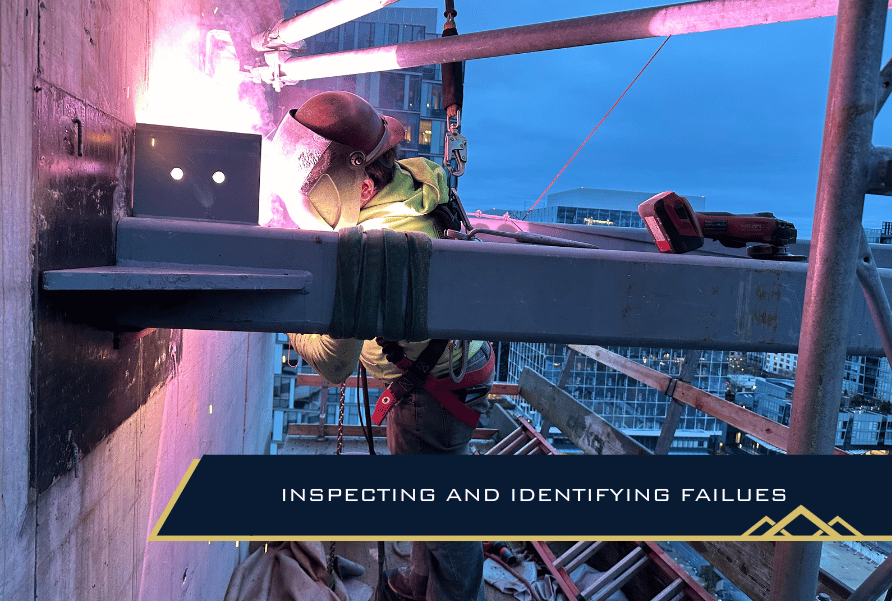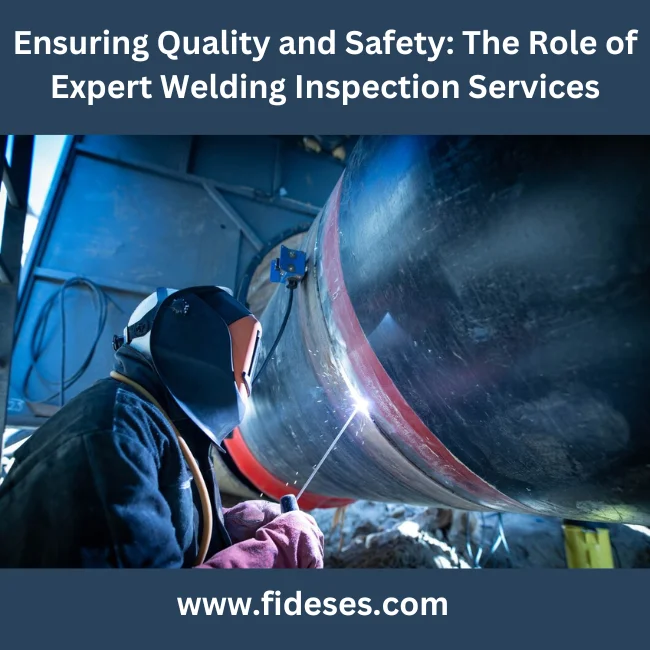How Regular Welding Inspection Madison Can Conserve You Money And Time
How Regular Welding Inspection Madison Can Conserve You Money And Time
Blog Article
Comprehending the Principles of Welding Evaluation to Guarantee Quality and Security
In the realm of modern design, welding examination stands as a cornerstone for ensuring both the top quality and security of architectural developments. The procedure involves a careful analysis of bonded joints, utilizing innovative methods such as radiographic and ultrasonic testing to spot hidden flaws. The proficiency of certified examiners is vital, as they link the space between theoretical standards and sensible application. Their role extends beyond plain discovery, incorporating the documents and interaction of findings to relevant stakeholders. Yet, what are the subtleties of these inspection methods that make them crucial for keeping architectural honesty?

Significance of Welding Inspection
In the world of industrial fabrication, the value of welding assessment can not be overstated. Welding assessment plays an essential role in making sure the stability, safety, and long life of welded structures. Provided the diverse applications of welding in markets such as construction, automotive, aerospace, and shipbuilding, the demand for stringent quality assurance actions is critical. Proper inspection ensures that welds fulfill specified requirements and codes, which is essential for preventing structural failings that might cause disastrous consequences.
The procedure of welding naturally entails intricate variables, consisting of temperature level, product buildings, and environmental problems, all of which can influence the top quality of the weld. A thorough assessment recognizes issues such as cracks, porosity, and insufficient blend, which can endanger the toughness and reliability of the weld. By finding these concerns early, rehabilitative actions can be taken, therefore reducing the danger of failing and connected costs.
Additionally, welding evaluation adds to governing compliance, as lots of markets are controlled by rigorous security requirements and guidelines. Failing to follow these policies can result in monetary charges and lawful liabilities. Ultimately, welding assessment not just safeguards physical structures yet additionally maintains and shields human lives market reputations.

Trick Welding Examination Techniques
Although welding evaluation is crucial to guaranteeing the top quality and safety and security of welded structures, it is the details approaches employed that determine the performance of the assessment process. Secret welding inspection approaches can be generally classified into non-destructive testing (NDT) and devastating testing. Non-destructive screening techniques such as aesthetic examination, ultrasonic testing, radiographic screening, magnetic particle testing, and fluid penetrant screening are mostly used to assess the residential properties of a weld without creating damages. Aesthetic evaluation is usually the primary step, including a comprehensive assessment of the weld's surface area for issues like splits or porosity.
Magnetic particle screening and liquid penetrant testing are surface area assessment methods utilized to locate surface and near-surface imperfections. These extensive examination approaches guarantee that welds satisfy market standards and security needs, thus ensuring structural stability and performance.
Duty of Certified Inspectors
Certified assessors play an essential function in the welding inspection process, guaranteeing that all welds follow rigid market standards and security regulations. Their proficiency is necessary in recognizing issues or abnormalities that may jeopardize the architectural integrity of a weld. By carefully analyzing each weld, accredited assessors aid stop prospective failures that can lead to pricey repairs or hazardous crashes.
To end up being licensed, examiners should undertake rigorous training and screening, which familiarizes them with different welding techniques, materials, and testing methods. This detailed expertise permits them to examine weld quality properly and make notified judgments concerning their security and integrity. Additionally, licensed examiners are skilled in interpreting blueprints and my link requirements, making certain that the welding job aligns with the project's style requirements.
An indispensable part of their function is to record their searchings for thoroughly, providing a detailed record of the assessment procedure. Their contribution is vital in maintaining high degrees of high quality and safety and security in this contact form welding procedures.

Tools Utilized in Welding Examination
Welding inspectors count on a variety of specialized tools to perform their duties successfully, making certain each weld fulfills the needed criteria. Amongst these devices, aesthetic assessment aids like multiplying glasses and mirrors are basic, permitting inspectors to closely take a look at welds for surface area defects such as splits, porosity, and undercut. Calipers and fillet weld evaluates are essential for determining weld measurements to verify conformity with layout specs.
Advanced tools expand past aesthetic aids, including non-destructive screening (NDT) devices. Ultrasonic testing tools are critical in identifying subsurface defects, making use of acoustic waves to expose interior suspensions without endangering the weld's stability. Similarly, radiographic screening employs X-rays or gamma rays to record photos of a weld's inside, highlighting possible defects.
Magnetic particle screening is an additional crucial device, specifically for discovering surface area and near-surface gaps in ferromagnetic materials. By applying magnetic fields and ferrous fragments, inspectors can recognize flaws that could or else be unnoticeable.
Dye penetrant inspection is frequently utilized for non-ferrous materials, giving a contrast-enhanced visual check for surface-breaking issues. Welding Inspection Madison. Together, these devices allow welding inspectors to thoroughly assess weld high quality, guaranteeing security and integrity in different applications across industries
Making Certain Structural Honesty

Welding procedures should follow recognized criteria and codes, such as those defined by the American Welding Culture (AWS) or the International Organization for Standardization (ISO) These guidelines make sure that the welds can stand up to operational tensions and ecological factors. Qualified and licensed welders play a critical function in this procedure, as their know-how makes sure that methods are used appropriately, decreasing defects such as fractures, porosity, and incomplete fusion.
Post-weld evaluation is an additional necessary component of verifying architectural integrity. Non-destructive testing (NDT) approaches, including ultrasonic testing and radiographic screening, are utilized to discover subsurface imperfections without compromising the welded structure. These evaluations verify that the welds meet the needed quality criteria, redirected here supplying guarantee of their sturdiness and reliability. Eventually, making sure architectural honesty in welding not just safeguards human lives yet additionally protects investments and improves the longevity of crafted frameworks.
Verdict
The principles of welding assessment are necessary for preserving the high quality and security of welded frameworks. By executing vital evaluation methods, such as aesthetic analyses and non-destructive testing, prospective issues that might endanger architectural integrity are identified. Licensed examiners are crucial in making certain conformity with sector requirements and effective interaction among stakeholders. Using specialized tools even more boosts the examination process, inevitably protecting human lives and lengthening the life expectancy of bonded buildings.
Welding examination plays a critical duty in ensuring the integrity, safety and security, and durability of bonded structures.Although welding inspection is essential to making sure the high quality and safety of welded structures, it is the certain methods employed that determine the effectiveness of the examination procedure. Key welding examination approaches can be broadly classified right into non-destructive testing (NDT) and damaging testing.Qualified inspectors play a critical function in the welding evaluation process, making certain that all welds abide with rigorous sector standards and security guidelines.The fundamentals of welding inspection are crucial for keeping the top quality and safety and security of bonded frameworks.
Report this page